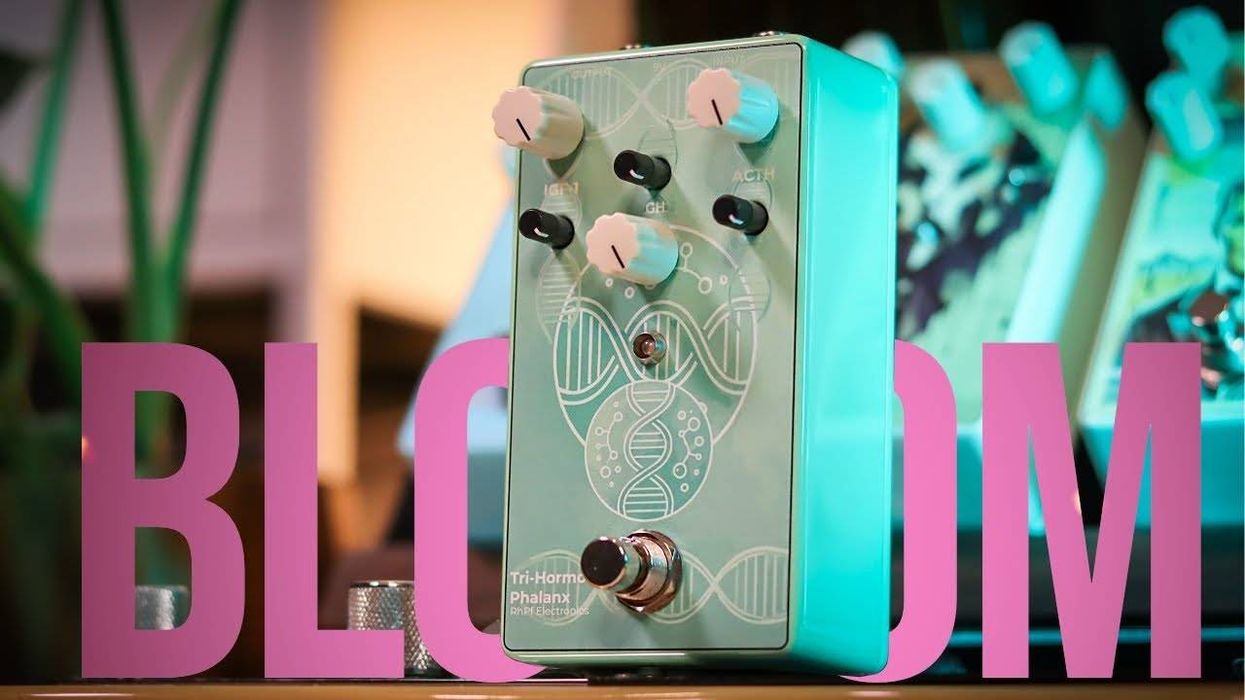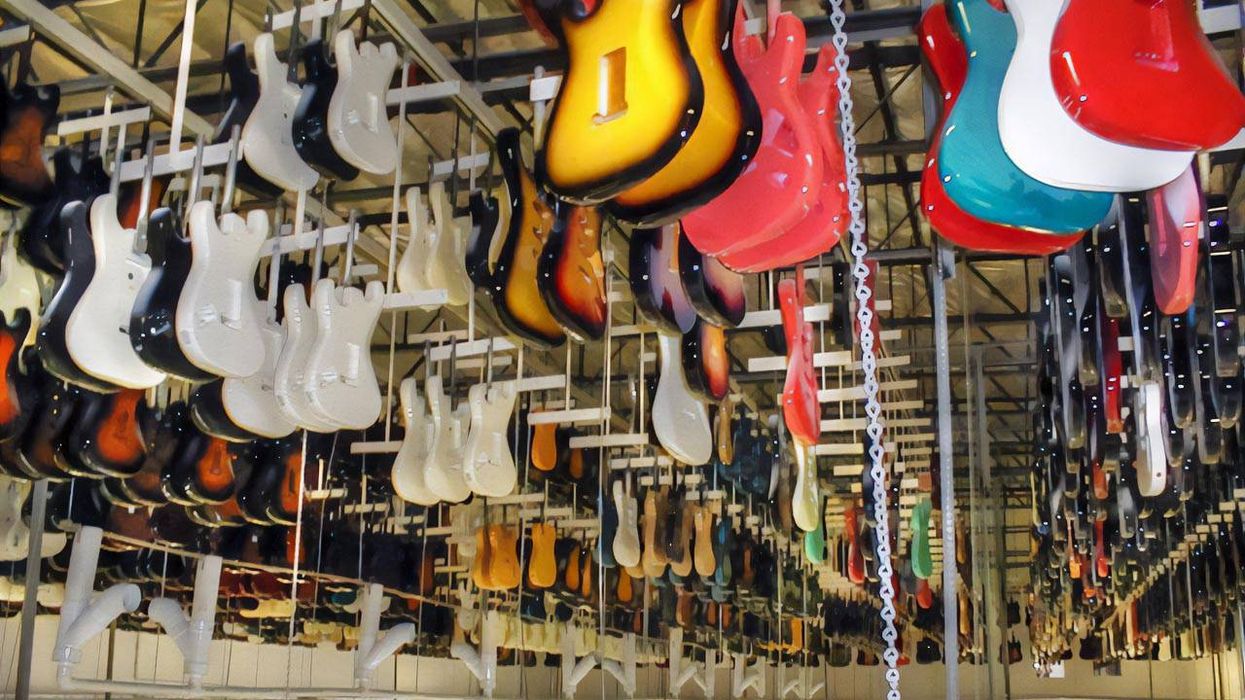RatingsPros:Lively and dynamic. Excellent playability. Nice neck. Pretty, economical styling. Cons: Brash midrange in heavy strumming situations. Richlite bridge feels plasticky. Street: $1,299 Gibson G-45 Standard gibson.com | Tones: Playability: Build/Design: Value: |
Gibson J-45s are absolutely beautiful things. On most days, I’d venture that they are the prettiest flattops of all. But the model’s enduring appeal and super-classic status is also tied to a certain sound: earthy, husky, mellow but big. If a venerable and dusty old barn could sing in soft summer evening light, well, that might just be the voice of a J-45.
Gibson’s new G-45 is a very different kind of Gibson dreadnought. And while it shares the same handsome lines, dimensions, and scale length with its more rustic elder cousin, the walnut-and-spruce G-45’s voice is brighter and more contemporary sounding than a traditional mahogany-and-spruce J-45. Yet for all these differences, the G-45 offers cool alternatives to canonical Gibson sounds that fit well in modern music production. And at $1,299 for the Standard model reviewed here, it comes with an accessible price tag, too.
Quick Costume Change
If you have a feeling that you’ve seen the G-45 before, in some ways you have. Just a few years back, Gibson introduced the J-15, a slope-shouldered, solid walnut-and-spruce take on the J-45 template. The G-45 uses the same basic walnut-and-spruce tonewood formula, but uses different woods and materials elsewhere in the guitar’s construction to achieve a more accessible price. So where the J-15 had a walnut bridge and fretboard, the G-45 uses Richlite fiber-based composite, and where the J-15’s neck was maple, the G-45 uses mahogany-like utile. The G-45 also uses a Fishman Sonitone pickup system, which is less expensive than the J-15’s LR Baggs Element.
Other significant differences between the two guitars have little to do with cost savings. The G-45 uses Gibson’s Advance Response neck profile, which is thicker than the J-15’s Slim Taper neck. And the G-45 uses the J-45’s belly-up bridge shape, in a nice nod to J-45 tradition.
While the G-45 is inexpensive by Gibson flattop standards and uses less luxurious materials in places to achieve that aim, it shows no signs of cutting corners in construction. Fretwork is perfect. Less conspicuous elements like bracing and the solid lining that takes the place of kerfing at the top and back joins are flawlessly finished. It’s little surprise that this guitar emerged from the same Bozeman, Montana, shop that’s produced Gibson’s highest-end acoustics for years. Someone is clearly paying attention to the details.
Meet Me in the Middle
If you’re looking to the G-45 to deliver classic mahogany-and-spruce J-45 tones, you might want to consider alternatives. The G-45 sounds very different—even within the wide spectrum of variation in the J-45 family. That doesn’t mean the G-45 doesn’t sound excellent, though. Many tones are unusual for a slope-shoulder dreadnought and potentially very useful in recording situations.
While many factors make up the G-45’s tone signature, the biggest differences between the G-45 and J-45 are likely down to the G’s solid walnut back and sides. Walnut typically produces bright, tight, focused tones with emphasis in the mid- and high-mid range. You hear that very tone profile in the G-45 immediately, and if you dive in expecting the deep, mellow colors of a mahogany-backed J-45 you may be taken aback.
But if you sit tight with the G-45 and explore its dynamic range and responsiveness to variation in playing style, you’ll uncover a wealth of surprises. The G-45 has excellent string-to-string balance. And while “pianistic” is overused as an adjective to describe acoustic guitar response, the G-45 does have a well-tuned piano’s balance and touch sensitivity over the fretboard’s whole expanse. High notes from the first string ring with detail and brilliance. The high-mid tone emphasis also works interestingly with the big slope-shouldered body—generating a perceptible natural reverb that, no kidding, could find you forgoing outboard reverb in the studio, especially if you use the guitar for single-note leads. This balance and strength in the mid- and high-range segments of the tone spectrum also makes the G-45 excellent for fingerstyle, where you can leverage the strong midrange and high-end detail for melodic nuance and use it’s dynamic range for expressive variation in bass lines.
If the G-45 has a relative weakness—at least in its freshly minted state—it’s the tendency for the midrange to overpower the bass in heavy strumming situations. In a recording studio, you can roll back some of the abundant shimmer, but in performance, the midrange is strong enough to force a change to a lighter picking approach. It’s likely this aspect of the G-45 will mellow over time. And while the bass sometimes seems underwhelming relative to the midrange, in isolation it’s warm, complex, and resonant.
The Verdict
The same design economy and inspiration that makes the J-45 and J-50 unassailable classics make the G-45 a gem to behold. The subdued styling is gorgeous. The maple hues of the spruce top work beautifully with the slope-shoulder lines and proportions. And you’ll probably stare at the complex, swirling walnut figuring on the back and sides for years. The guitar is tuning-stable, rugged, and built to last. The setup and intonation were excellent, and the Advance Profile neck is comfortable, fast, and full in a way that reduces hand fatigue while adding a sense of substance and quality. Purists seeking a J-45’s specific tone signature on the cheap may want to consider other alternatives. But for players with more open-ended agendas, the G-45 is a cool departure, brimming with many lively tones.
Watch the First Look:
















